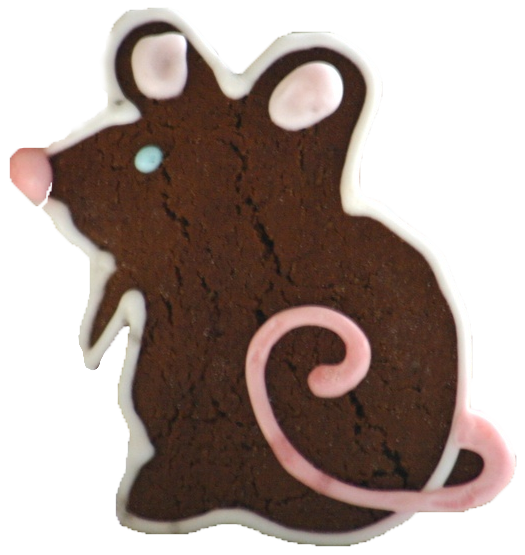(Original article by R Hutchings)
The Tan varieties have a remarkable capacity for improving their strength of tanning in successive generations, even without selection. This has often been commented upon by fanciers who have observed the effects of outcrossing, but no satisfactory explanation for it seems to have been advanced to date. It is the kind of problem that might be expected top appeal to scientists, but to the professional geneticist a mouse is either identifiably tan or it is not, and they normally leave considerations of quality distinctions to the Fancy. As far as I am aware, no scientific examination has been made of the subject to date.
One might imagine that the Tans bred in the Fancy would get richer and richer in strength of tan indefinitely, but unfortunately there is a limiting consideration: that is, that as the tanning gets richer it also tends to spread and to invade the areas where it is not wanted. Tan fanciers have tackled the problem over the years by outcrossing from time to time to the equivalent Self variety. This effectively pulls back the boundaries of the invaded areas and limits the extent of the tanning, although it also tends to reduce the strength for the time being.
So, how often should the outcross to Self be made? The most experienced Tan breeders are not dogmatic about this: the usual answer is ‘as often as necessary’. Bear in mind, however, that (as with all outcrossing) it is rash to wait until the need arises before you prepare to deal with it. The wise Tan fancier has an outcross line of Selfs in waiting, having already tried them out in advance to check their effect on the top colour.
The most suitable Selfs would preferable excel in size and type, but it is obviously of no concern if they fail (as Selfs) in having tanned vents and throat spots.
The first generation from a Tan x Self mating will be all Tans (presuming the Tans used are true-breeding). This first generation will all carry Selfs, and bred together will throw a proportion of Selfs. If mated back to Tans some of the progeny will be true-breeding Tans. These can beidentified by a test mating to a Self: if any Selfs result you will know that the Tan carries Self, and can pass it on.
Any Self produces in crossing with Tans should be discarded, or at least not introduced into a line intended to produce Selfs for showing, or disposed of to other fanciers for this purpose. They can, of course, be retained or bred from for further crossing with Tans at a later date. This cautionary warning also applies to a lesser extent to Agouti and Cinnamon Tans, subject to the breeder’s discretion and experience. Sables are also Tans in make-up, but any other Tans deriving from their crosses are unlikely to be useful. Self Reds and Fawns and Argentes usually (but not necessarily) carry Tan, but any other colour Tans produced from these must be assessed on their merits.
In general terms, the pink-eyed dilution factor does not affect the strength of tanning; PE colours are usually sound, and often excel in strength with indeed an additional brightness and clarity.
Blue Tans provide a special difficulty for breeders and exhibitors in that the dilution from black to blue also affects the strength of tan. This is a liability in mixed colour classes, but experienced judges take the problem into consideration if an exhibit is otherwise sound. Silver Tans, which are (or should be) PE Blues, would also be expected to suffer the same weakness of tanning as Blues, but surprisingly some excellent exhibits are seen from time to time. It may be said that PE dilution reduces the effect of Blue on tanning. It seems more likely, however, that exceptionally well-tanned specimens shown as Silvers are in reality modified Doves. His is quite feasible, by the accumulation of minor modifiers, but the coldness of hue of true Silvers will be lacking.
 We use cookies to ensure that we give you the best experience on our website. If you continue to use this site we will assume that you are happy with it.
We use cookies to ensure that we give you the best experience on our website. If you continue to use this site we will assume that you are happy with it.
0 Comments